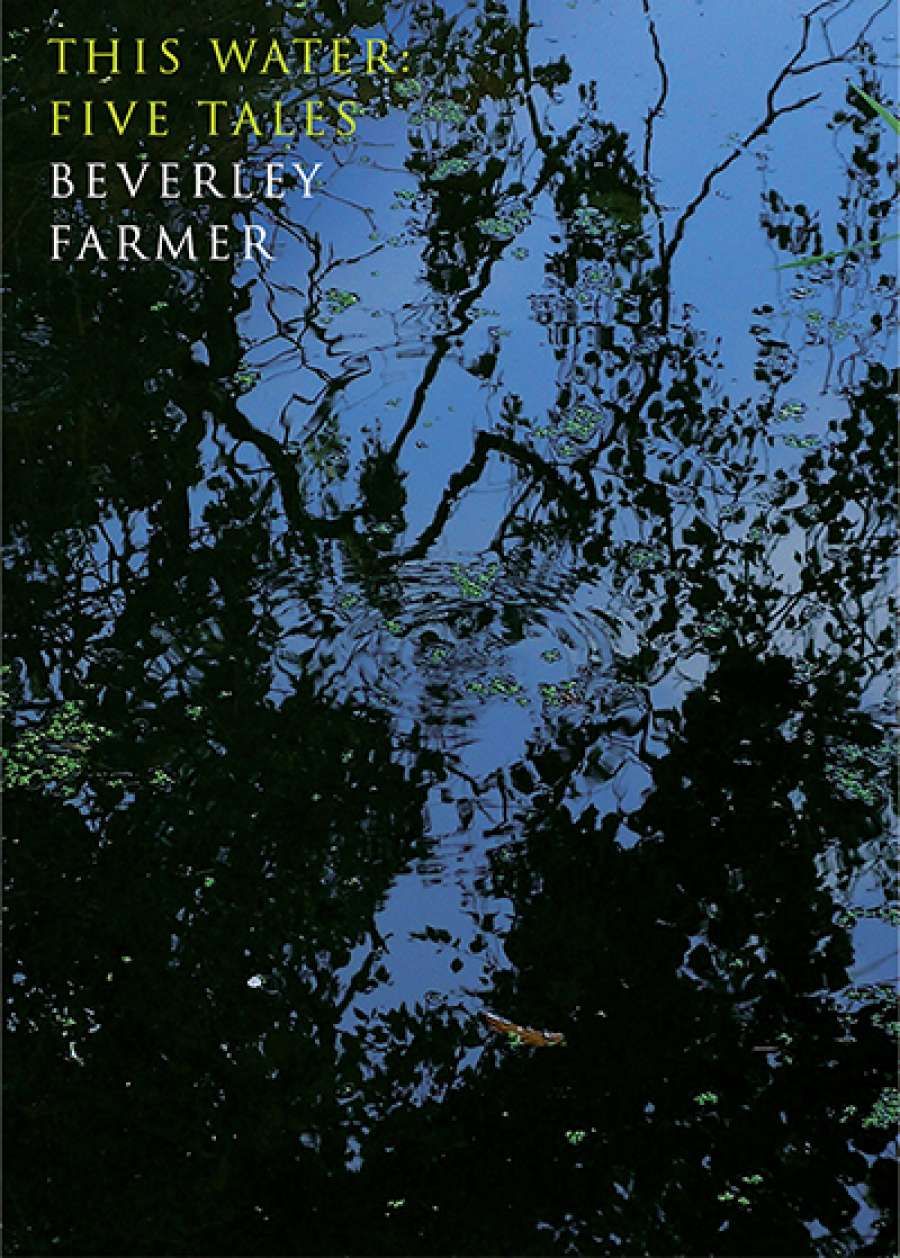
- Free Article: No
- Contents Category: Fiction
- Custom Article Title: Anna MacDonald reviews 'This Water: Five tales' by Beverley Farmer
- Review Article: Yes
- Online Only: No
- Custom Highlight Text:
There is a distinct poignancy attached to last things, a sense in which they encapsulate all that has gone before at the same time as they anticipate an end. In the moment of their first manifestation, last things are already haunted by their own absence. This Water: Five tales is the first book by Beverley Farmer to be published since 2005, and has been announced as her last work.
- Book 1 Title: This Water
- Book 1 Subtitle: Five tales
- Book 1 Biblio: Giramondo, $26.95 pb, 275 pp, 9781925336313
The second tale, ‘This Water’, is both the story of a princess who refuses her suitor and runs away with another and a meditation upon the mythical powers of water. For Farmer’s princess, water, like love, can only become known through experience: ‘How was I to know what love was, until I had it before my eyes? How was I to know its nature? As with milk, salt, honey, water, we only know what something is like once we touch it, or smell or taste or swallow it, or are swallowed by it.’
In each of the tales, Farmer expresses a wonder about the nature of things that can only be satisfied by sensual interaction with the world. Like Eve, whose curiosity leads her to eat the forbidden fruit, Farmer’s protagonists must touch, smell, taste, swallow the world in order to know it. So immersed in these sensual experiences do they become, they are at risk of being swallowed themselves.
Swimming is one form of immersion, and it is while swimming that the children in the third tale, ‘The Blood Red of her Silks’, come to grief. This is Farmer’s retelling of the legend of the Children of Lir, in which a jealous stepmother transforms her stepdaughter and her three young brothers into swans. Cast out, they live as birds for nine hundred years until ‘freed’ by a king who would capture and present them to his new bride as a wedding gift. Instead, once caught, their ‘swanskins slough away ... to leave four flayed bags of bone standing, toothless jaws agape’. Freedom, such as it is, has come too late. But these swans have an afterlife. ‘This water has a long memory’, and they are ‘still there in the glass of the surface, imprinted, breaking up as you burst through, being made whole again as the surface falls still around you, never within reach or far away’.
The underwater world is never far distant in the tales that make up This Water. In ‘Tongue of Blood’, Clytemnestra, now a shade, laments the murder by Agamemnon of their first-born daughter. Farmer conjures an underworld composed of all the associations that have gone before and presaging those to come:
There is room underground for seams of ice and fire. We shades have a labyrinth, nubbled and veined, their domes and udders and columns of stone, statues of stone, and dust, and grit hissing in a dark breath, water floors, water bodies, this underworld, this great shell, this cast of every snake the tales tell of.
This underworld labyrinth – turned to ice – takes shape in the book’s final tale, ‘The Ice Bride’, a retelling of the Bluebeard fairy tale. In it we discover the ring of gold ‘clamped’ on the bride’s finger and later reflected on the hands of those other brides, now captive in ‘a core of fathomless ice’. Like the princess of Lake Annaghmakerrig, the Ice Bride is curious and seeks to learn the world through her senses. Thus, This Water, which began with God’s curse on Eve, ends with the bride forced to eat from the pomegranate, its blood red juice staining her white silk gown.
The Ice Bride, like Clytemnestra, like the swans, like so many of Farmer’s characters, is ‘caught as in a web between our two worlds of life and death’, between first and last. Farmer’s prose is virtuosic, she is a stylist unlike any other living Australian writer, and it is difficult to read this last work without a haunting sense of loss.


Comments powered by CComment